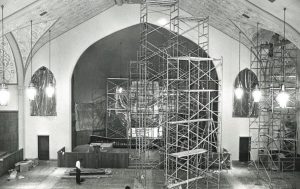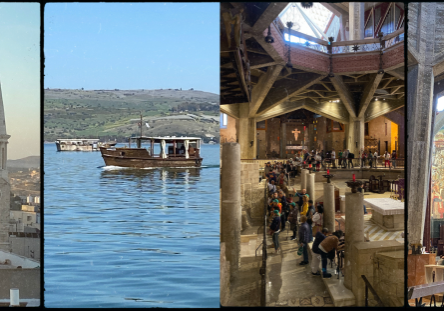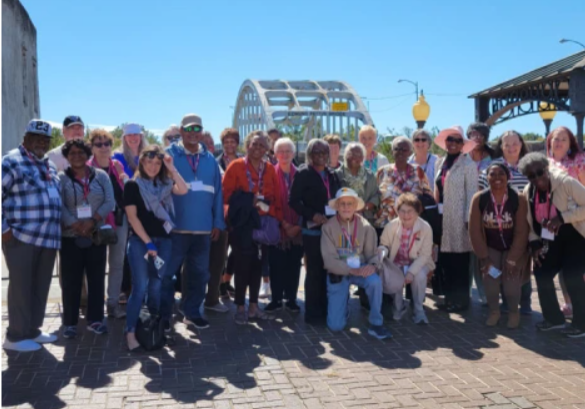Looking Back: The Sanctuary’s 1975 Renovation

1975 Sanctuary Renovations
By Doug Robinson
St. John’s Archives Committee
From generation to generation, St. John’s has been steadfast in the stewardship of our facilities. After all, much wear and tear can occur after thirty years of use.
Such was the case in the early 1970s when our congregation found itself facing significant maintenance, preservation and enhancement needs from a sanctuary that had not received a facelift since 1947. The sanctuary needed new carpet, the stained glass windows needed repairing, and the interior needed painting. It was also time to invest in larger space for our music department as programming and participation had grown exponentially since the renovations in the 1940s. Participants were simply out of room.
The task force, formed in 1973, included current church members Julius Waggoner, Dr. Bob Tannehill, Glenn Ketner, Jr., and Mark Ritchie, who represented the youth of the church. A major discussion point centered around the placement of the altar. Should it remain at the back of the chancel or placed in the center, as had been done in the chapel? Ultimately, the decision was to keep the altar in its present (and current) location.
Approved by the congregation in February 1975, the renovation was broken down into three phases according to priority: Phase One consisted of extensive roof repairs, repairing the lead surrounding the stained glass windows, repairing acoustical panels, restoration of the altar’s tryptic, interior painting, refinishing the pews (a decision later changed to purchasing new pews), relocation and elevation of the pulpit, moving the organ console, and upgrading the sound and lighting systems.
Phase Two focused on the music suite by expanding the rehearsal rooms, adding two choir robing rooms, and a music library.
Phase Three focused on some relatively minor work to the fellowship hall and the archives room.
Luther Sowers was commissioned to redesign the pulpit. Though not initially included in the project, he also designed new brass-covered doors for the Innes Street entrances to the narthex.
Phases One and Two were completed within seven months and dedicated on Sunday, Dec. 14, 1975. Phase Three began in 1976. The total project cost $150,000. $115,000 was committed during the initial pledge campaign, after which, on Easter Sunday 1975, Clifford Peeler challenged the congregation to step forward in faith and raise the needed funds. Within two weeks, an additional $35,000 was raised to complete the project.
Related Posts

Holy Land Pilgrimage



